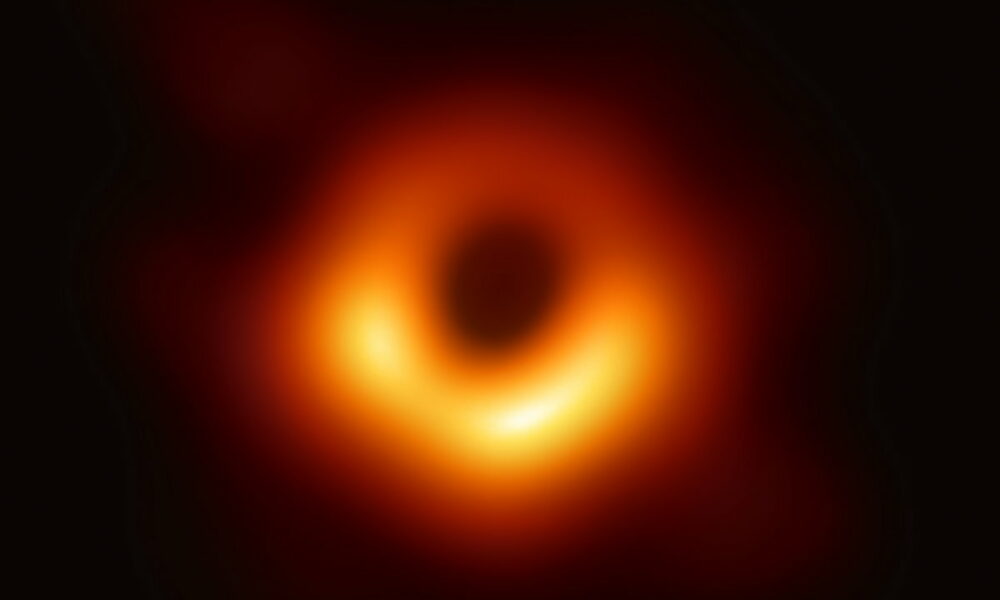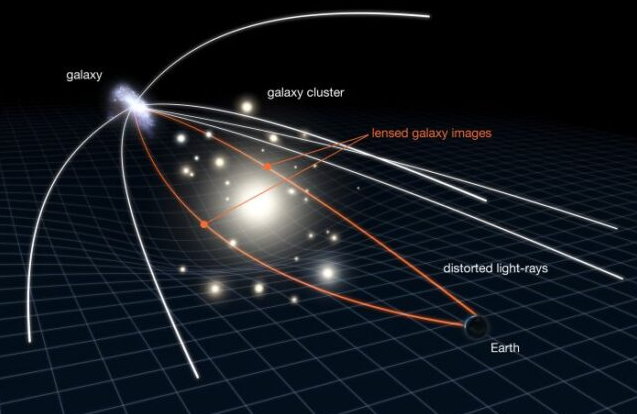
Abell 1201 is the name of a supermassive black hole detected for the first time in 2003 in the galaxy of the same name and now, thanks to the latest observations using gravitational lensing, it has been found to be much larger than previously thought. : 33 billion times more massive than our Sun.
Research published in the Royal Astronomical Society puts us on the trail of the supermassive black holes (SMBHs), emerged as an integral part of galaxy formation and evolution models. Astronomers say that there is at least one of these giants at the center of each galaxy and that these and the SMBHs have evolved with each other since their initial formation in the early Universe.
This is the case in the galaxy NGC 7727, which contains the closest pair of supermassive black holes to Earth found to date and dangerously close together in terms of cosmological scale, so it will inevitably end up merging into one even more massive one. NGC 7727 is a classic type of merger of two different (probably elliptical) galaxies merging into one, just as our Milky Way and its neighbor Andromeda are predicted to do.
Abell 1201, the largest supermassive black hole
Returning to Abell 1201, it must be said that it is one of the largest of its kind. It is located about 2.7 billion light-years away and has a whopping 32.7 billion times the mass of the Sun. They calculate that the diameter of the event horizon would cover more than 1,290 astronomical units. Putting the data in context, say that the distance of Pluto from the Sun is only 40 astronomical units. It’s amazing to think about these measures that escape our comprehension like other distances of the Universe.
“This particular black hole, which is about 30 billion times the mass of our Sun, is one of the largest ever detected and is at the upper limit of how big we think black holes can theoretically get, for what an extremely exciting discovery”. explains physicist James Nightingale from Durham University in the UK.
Your measurement is now much higher than the first capture of the turn of the century by the Hubble telescope. And it is not easy. are believed to exist There are many black holes in the Universe, but unless they are actively accreting material, a process that produces a large amount of light as the material heats up before falling into the black hole, they are not easy to detect.
Gravitational lens to detect black holes
As you know, black holes themselves don’t emit light that we can detect, so we have to find them by looking for the effect they have on the objects around them. And here comes that gravitational lens effect predicted by Einstein’s theory of general relativity. It acts in all types of electromagnetic radiation and not only in visible light and is formed when light from distant and bright objects such as quasars curves around a massive object (such as a galaxy or black hole) located between the emitting and receiving object.
This occurs when one’s own spacetime is warped by mass. Any light traveling through that region of space-time has to travel along a curved path, very interesting for distant observations. Astronomers can study this distorted light to test the properties of the lens’s mass.
The central galaxy or brighter cluster of galaxies (BCG) Abell 1201, is a large diffuse elliptical galaxy known as strongly gravitationally lensed. A galaxy far beyond BCG appears next to it as an elongated, eyebrow-like smudge that tightly wraps around its periphery. This spot was discovered in 2003, and already in 2017 astronomers found a second, fainter spot, even closer to the galactic center.
This implies, the astronomers proposed, the presence of a very large black hole at the center, but the available data were not detailed enough to resolve the central mass or reveal more details about what was there. Now they have been able to detect it resulting in the largest known black hole. Scientists hope to use similar methods to detect and weigh other black holes in the distant Universe. And perhaps clues to their evolution and how they can become so gigantic.






